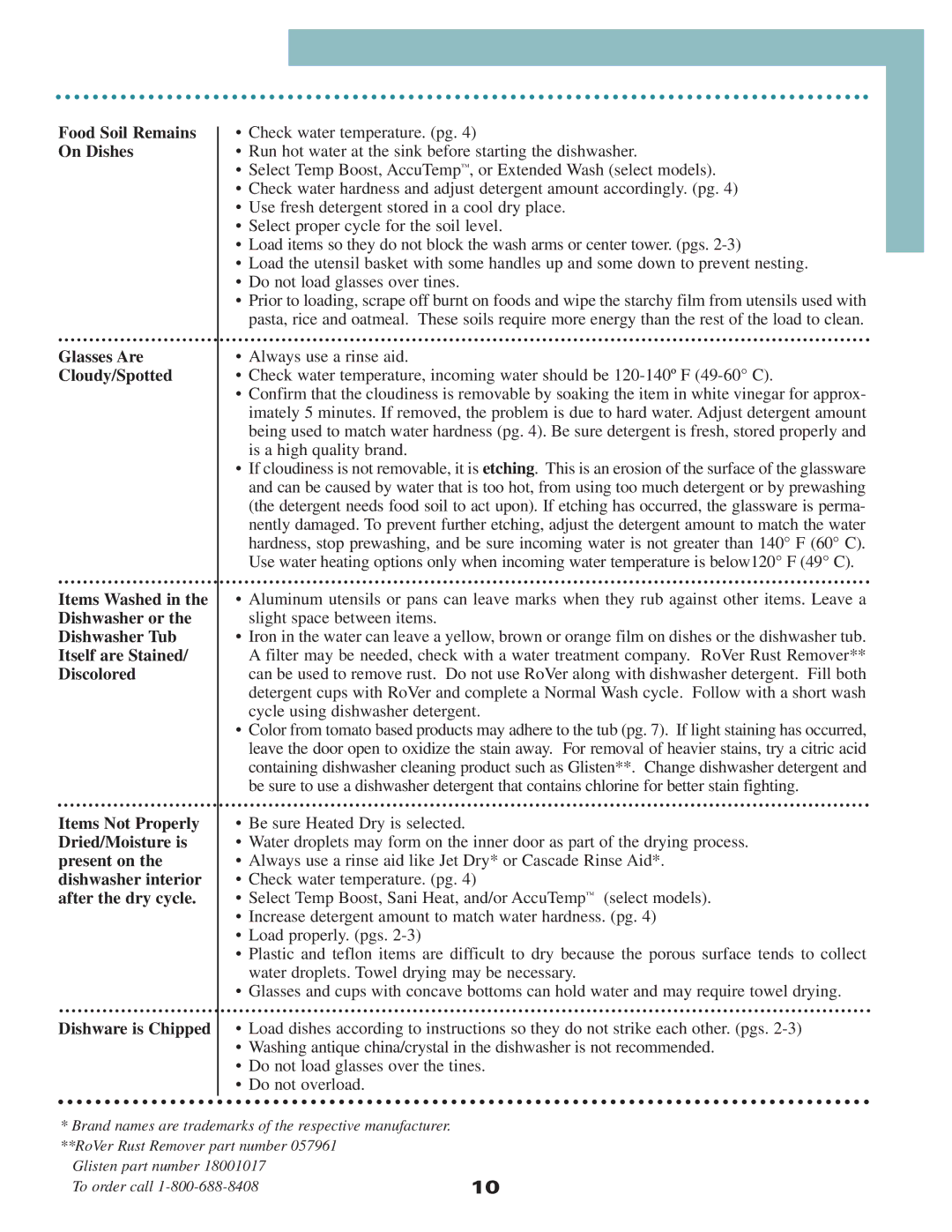MDB4160, 6 915555 B, MDC4100, MDBD820, MDB4100 specifications
Maytag has long been synonymous with durability and performance in the appliance industry, and its range of dishwashers demonstrates this legacy. The Maytag series, which includes models such as the 6 915555 B, MDC4100, MDB4160, MDBD820, and MDB4100, showcases a blend of innovative technologies and features designed to make dishwashing efficient and effortless.One of the standout features across these models is the PowerDry option, which ensures dishes come out thoroughly dry, eliminating the need for towel drying. This is particularly beneficial for glassware and plastics that tend to retain moisture. The models are designed with a robust stainless steel tub that not only enhances durability but also improves drying performance by retaining heat during the wash cycle.
These dishwashers are equipped with the Advanced Clean Wash System, a technology that utilizes a high-efficiency spray arm to ensure complete coverage of all dishes. The powerful spray action targets tough food particles, allowing for a thorough clean without the need for pre-rinsing. The Sensor Cycle feature intelligently adjusts the wash cycle based on the soil level of the dishes, maximizing water and energy efficiency.
User convenience is a hallmark of Maytag dishwashers. The QuietSeries sound package offers whisper-quiet operation, making them ideal for open-concept living spaces. Additionally, the models feature a variety of wash cycles, including Heavy, Normal, and Quick, giving users flexibility based on their needs.
Capacity is another strong suit of these models, with adjustable racks that can accommodate larger pots and pans. The fold-down tines in the lower rack create more space for bulky items, while a dedicated utensil basket ensures that smaller items are clean and organized.
Moreover, Maytag's commitment to reliability is exemplified by a 10-year limited parts warranty, underscoring their confidence in the longevity of their products. Energy-efficient certifications also make these dishwashers environmentally friendly choices for modern kitchens.
In summary, Maytag's lineup of dishwashers, including the 6 915555 B, MDC4100, MDB4160, MDBD820, and MDB4100, delivers a combination of advanced cleaning technology, user-friendly features, and reliable performance, making them a wise choice for consumers seeking efficiency and durability in their kitchen appliances.

